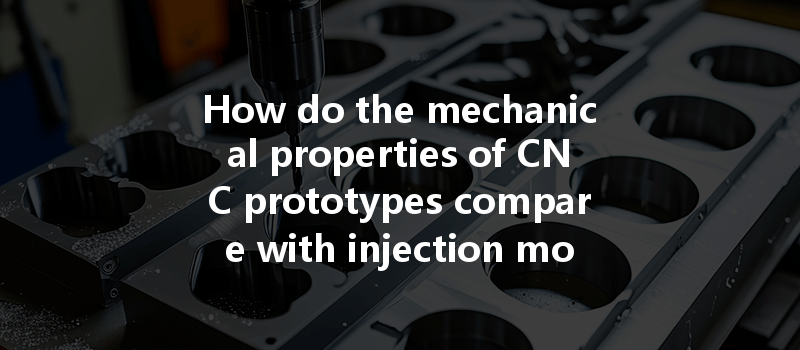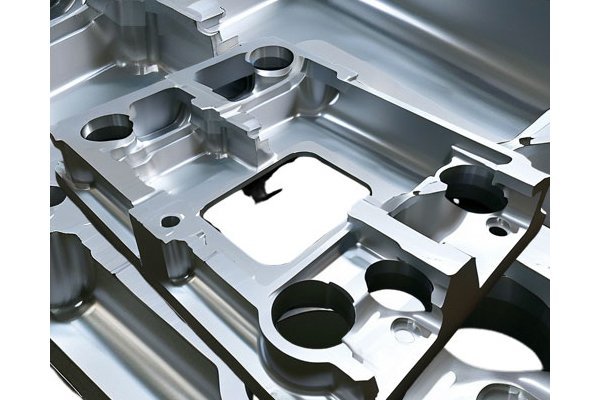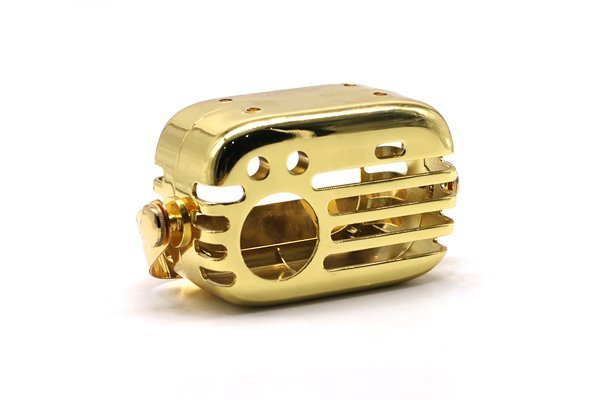Did you know that the choice between CNC prototypes and injection molding can significantly impact the performance and durability of a final product? In the fast-paced world of manufacturing, understanding the mechanical properties of different production methods is crucial for achieving optimal results. The difference in mechanical properties between CNC prototypes and injection-molded parts can influence everything from design stability to application functionality, making this an essential topic for engineers, designers, and manufacturers alike.
In this comprehensive blog, we’ll explore the nuances of how the mechanical properties of CNC prototypes stack up against those produced via injection molding. We’ll delve deeply into material selection, process considerations, and the specific use cases that would best benefit from each approach. Whether you’re in the automotive sector, aerospace, medical devices, or consumer goods, this information will equip you with the insights needed to make informed decisions.
Understanding the Basics
What is CNC Prototyping?
CNC (Computer Numerical Control) prototyping involves using a computer-controlled machine to remove material from a solid block to create a desired shape. This method offers precision and flexibility, making it an excellent option for creating prototypes that need to adhere to tight tolerances.
Advantages of CNC Prototyping
What is Injection Molding?
Injection molding is a manufacturing process where melted material—usually thermoplastics or thermosetting polymers—is injected into a mold cavity, where it cools and hardens to form the final part. This method is particularly effective for producing large volumes of identical components.
Advantages of Injection Molding
Comparing Mechanical Properties
When comparing the mechanical properties of CNC prototypes to those produced by injection molding, several factors come into play:
CNC prototypes generally offer superior strength and stiffness due to the removal of material, which allows for fine-tuning the part’s geometry. CNC machining provides more control over the internal structure of the material, yielding a denser, more effective component.
Conversely, injection-molded parts can exhibit slightly lower tensile strength, especially if the mold design results in stress points or voids. The cooling rate of the polymer also affects crystalline structures within the molded part, often resulting in weaker areas. However, certain advanced injection molding processes, such as gas-assisted injection molding, can mitigate these weaknesses.
CNC machining provides a superior surface finish compared to injection molding. The milling or turning process allows for a smooth, polished exterior, which is ideal for applications requiring aesthetics or low friction. Injection-molded components can also achieve good surface finishes but may often need secondary operations like polishing or coating to meet the desired quality.
CNC prototypes can be made with tighter tolerances—sometimes within ± 0.001 inch—making them ideal for precision engineering applications. Injection molding, while generally accurate, tends to have looser tolerances due to factors such as mold wear and thermal expansion during the cooling process.
The thermal behavior of a material can be crucial for specific applications. CNC machined components often exhibit better thermal stability and heat resistance than their injection-molded counterparts, making them suitable for environments with fluctuating temperatures.

Injection-molded parts can be designed for various thermal management applications, but the parameters must be closely monitored throughout the injection process to ensure uniform quality.
Cost-Effectiveness and Production Efficiency
Initial Setup Costs
CNC prototyping benefits from a lower initial investment since no molds need to be created. However, the cost per unit can be high for large productions due to longer machine runtime compared to the quick cycles of injection molding.
Volume Considerations
For limited runs, CNC machining is often more cost-effective, while injection molding becomes beneficial for high-volume production, where the cost per unit drops significantly after the initial mold expenses are amortized.
Lead Times
CNC machining typically provides quicker turnaround times, especially for small batches, but lacks the scalability of injection molding in mass production settings. For high volume and consistent quality, the investment in molds for injection molding pays off over time.
Material Selection
Common Materials for CNC Prototyping
Common Materials for Injection Molding
Real-World Applications and Case Studies
Example 1: Aerospace Components
In the aerospace industry, the choice between CNC machining and injection molding can hinge on weight and strength. CNC machining allows engineers to carve out components from a solid block of high-strength aluminum, ensuring every ounce matters when it comes to aircraft performance.
Example 2: Consumer Electronics
For consumer electronics, quick prototyping is essential. CNC machining allows for rapid iterations of housing designs, while injection molding is favored for mass-producing components like phone casings due to its efficiency and uniformity.
Example 3: Medical Devices
In the medical sector, precision is paramount. CNC machining is often chosen for surgical instruments that require tight tolerances, while injection molding is used for producing disposable components at a large scale, such as syringes or drug delivery devices.
In summary, both CNC prototyping and injection molding hold unique advantages that align with specific production needs and applications. Understanding the mechanical properties of each process allows manufacturers to make informed choices to optimize their production outcomes. As we explored, CNC prototyping excels in precision, material versatility, and flexibility for low to medium production runs. In contrast, injection molding is designed for high-speed, cost-effective mass production with less customization.
This distinction is essential, not just for engineers and designers but also for businesses looking to innovate and enhance their products. By closely examining the mechanical properties that define each process, you can make a more educated decision to align with your production and design goals.
Thinking about these factors will ultimately impact your project’s performance, cost-effectiveness, and success in a competitive market.






